The Volvo XC40 has already proven that it’s a great family SUV as a petrol, diesel and a plug-in hybrid. Now as a fully electric car, it’s entering entirely new territory for Volvo.
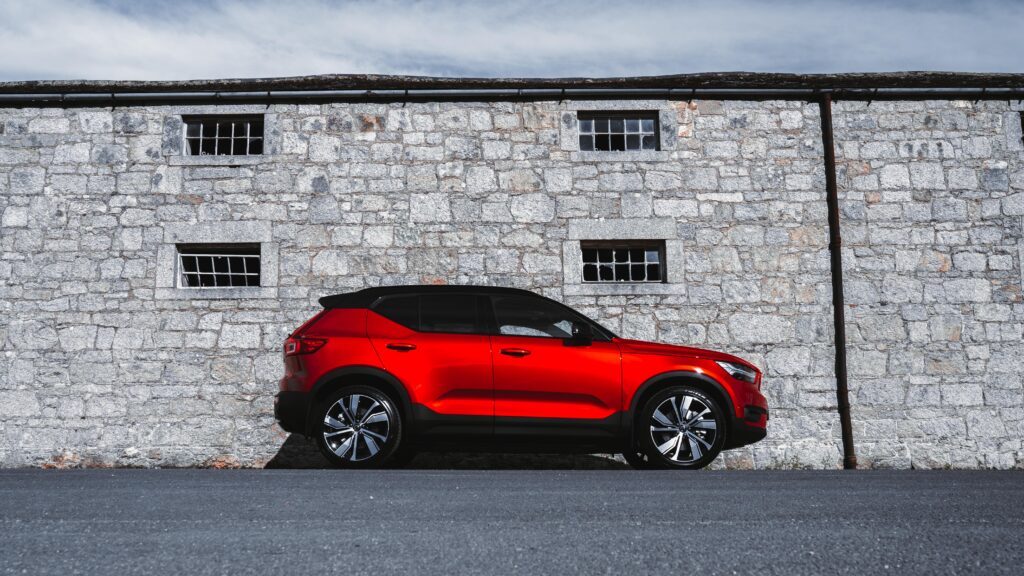
Special mention : Quality looks and feel. Volvo standing out with beautiful designs, fit and finish.
Needs work : Range needs to match it’s competitors. Infotainment could be better laid out and easier to use.
| BHP 408 BHP | Electric / Auto |
| 0-100 km/h in 4.9 seconds | Road Tax €120 |
| Price: €52,950 As Spec’d : €68,258 | Boot space 452 litres Range 418 km |
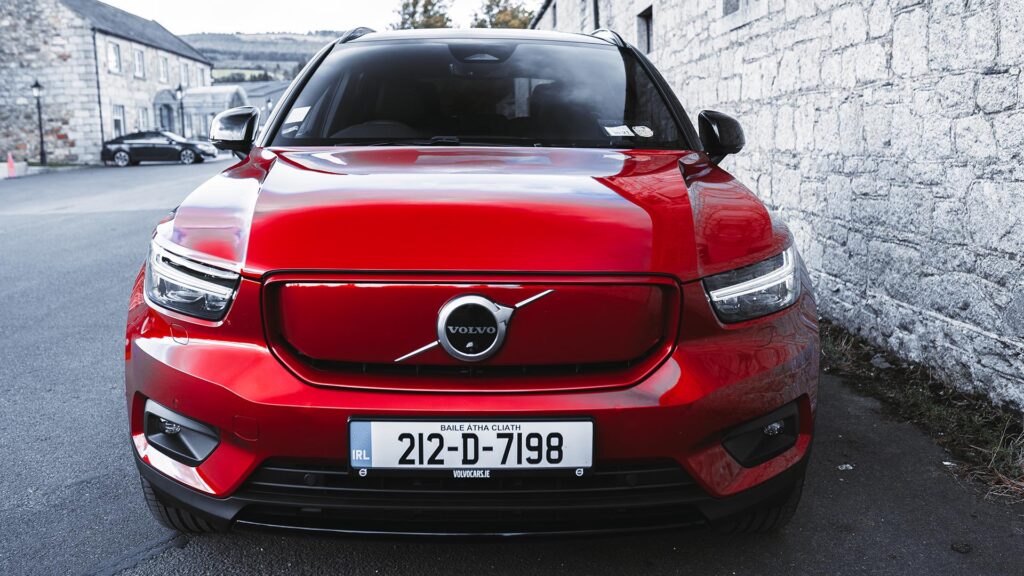
This new fully electric XC40 is the first of five electric vehicles that Volvo is launching in the next five years and the manufacturer wants electric cars to account for half of its global sales by 2025. Those bold ambitions start with the Volvo XC40 Recharge P8. And as you can see it looks very similar to the fuel powered versions of the XC40.
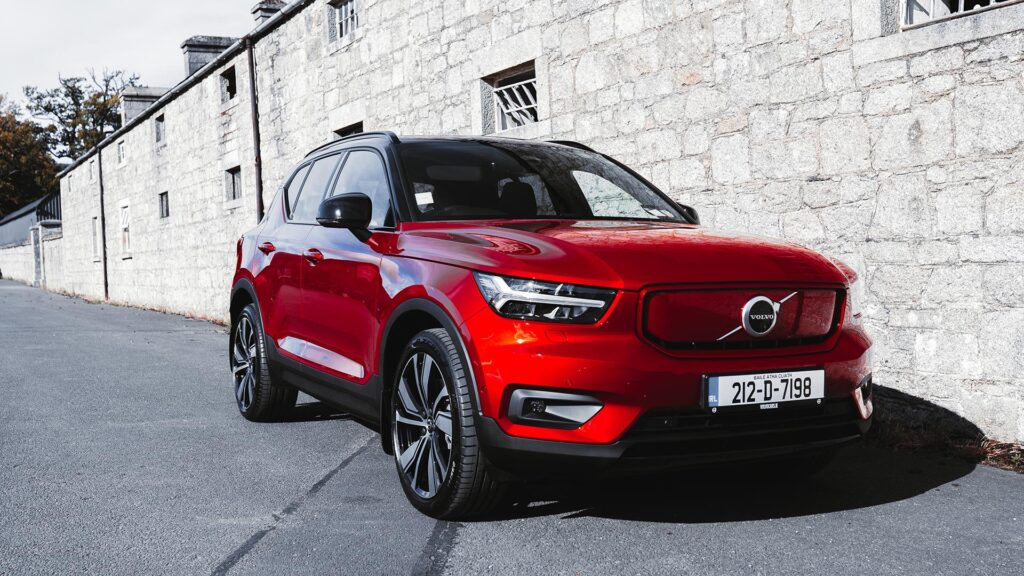
The differences between this fully electric version and the rest of the range is that this XC40 grille is colour coded (no matter what exterior colour you go for) which does look very different and makes it stand out. Other differences include the Recharge logos at the back of the car and there’s also exclusive alloy wheel designs. There’s a charge port where you would have otherwise found the petrol cap and power comes from a 78 kilowatt hour lithium ion battery which is exactly the same as the one that you’ll find in the Polestar 2. Although this is Volvo’s first fully electric car, the Polestar sub brand was launched a couple of months earlier with its own fully electric vehicle.
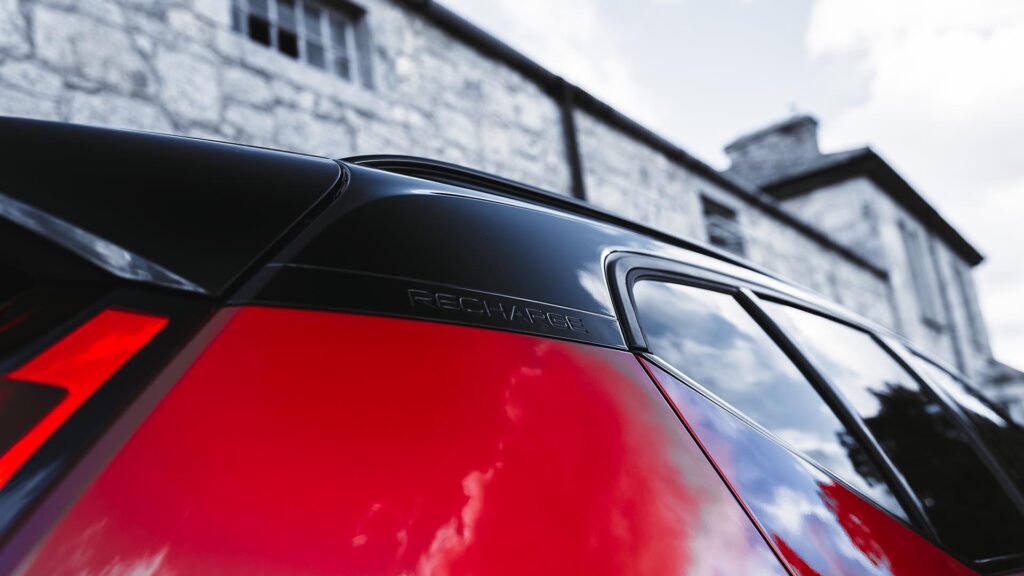
Charging the battery using a 150 kilowatt charger will go from zero percent to 80% in just 40 minutes. From a home wall box charger you’ll need an overnight charge to get the full capacity. The battery is under the floor which means there is a slightly reduced ground clearance of 175 millimeters compared to 211 millimeters in the regular model. The space inside and the 452 litre boot capacity is unchanged so you still have loads of space in the back plus a new handy spot in the front to keep the charging cables.
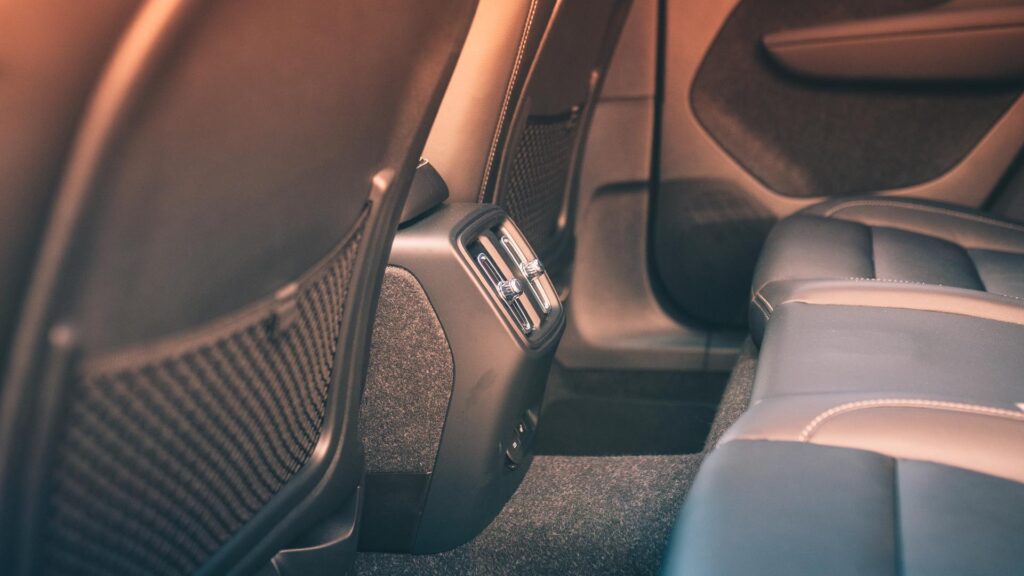
Inside, just like the outside, it’s very similar to the other XC40’s that we’re used to. There are a few changes like the new infotainment system which has been developed with Google and Android. It’s essentially the same software used in the new Polestar 2 but the look of it is slightly different and it’s not a world away from what we’re used to in previous Volvo’s. You get Google Maps as standard and you also get Google Assistant to help with voice command functions. It’s quick to respond to touch inputs, it looks slick, it’s got a nice layout but one slight criticism remains being that the icons for the sub menus are just a bit on the small side. It would be more helpful if they were bigger so that they’re easier to hit on the move.
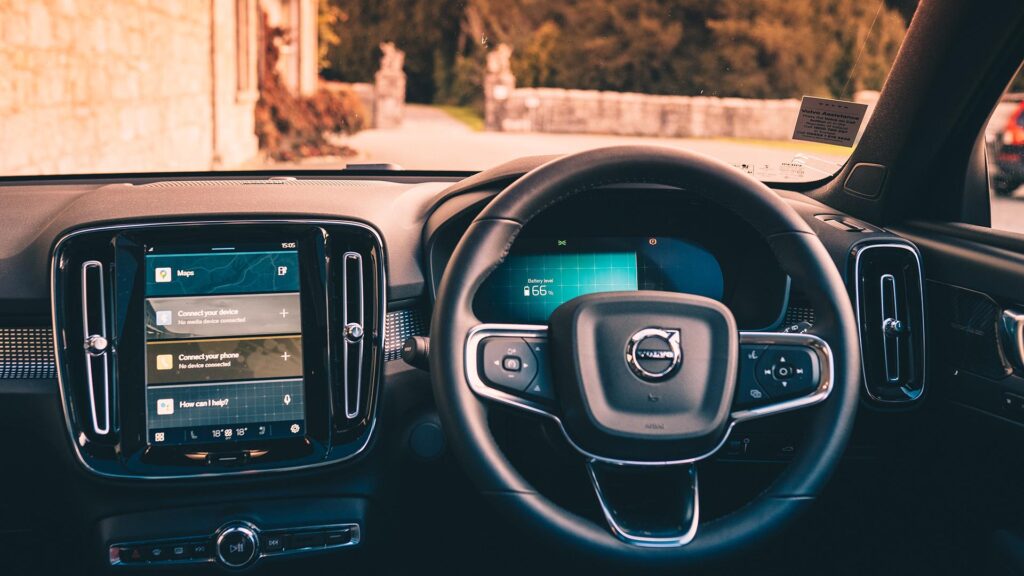
You also have an upgraded digital driver display so it’s still a nice big screen but the graphics and the resolution is better than before so that’s really good. There are some additional EV specific functions that show you how much battery range you’ve got left rather than how empty your fuel tank is.
Elsewhere in the interior it does feel really superior. You would assume the Audi e-Tron to be the benchmark for electric car interior quality but the XC40 is certainly among the best. There are some materials that are slightly cheaper feeling but still really classy, very good quality which you’d want for a car this expensive.
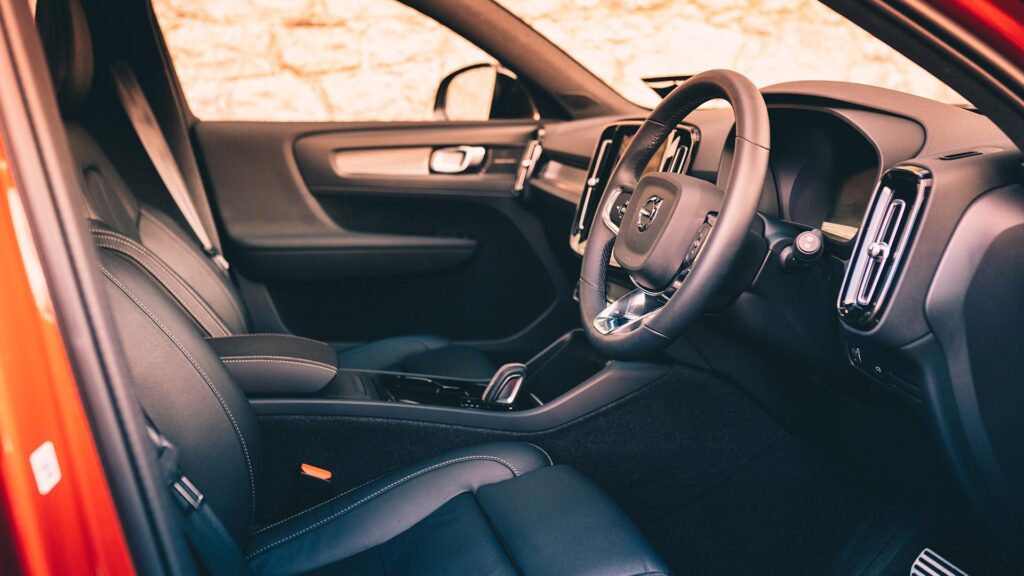
Regarding performance, the first thing to say is that it is very quick. This is one of the most powerful Volvo’s ever made. It’s got two electric motors and both of them have 201 BHP so the total system output is 408 BHP and as well as that, it’s all-wheel drive. All that power and torque means that this is a seriously seriously quick car, quick enough to go from 0-100 km/h in just 4.9 seconds. Which makes it comfortably the quickest XC40 in the lineup, it’s impressive because it’s also incredibly heavy. The lightest XC40 with a petrol engine weighs about 1600 kilograms but this is more than 2,100 kilograms which is pretty chunky. The acceleration really is enough to properly pin you back in your seat, it’s not as quick as a Tesla Model 3 performance but it’s still quicker than many other electric cars on sale.
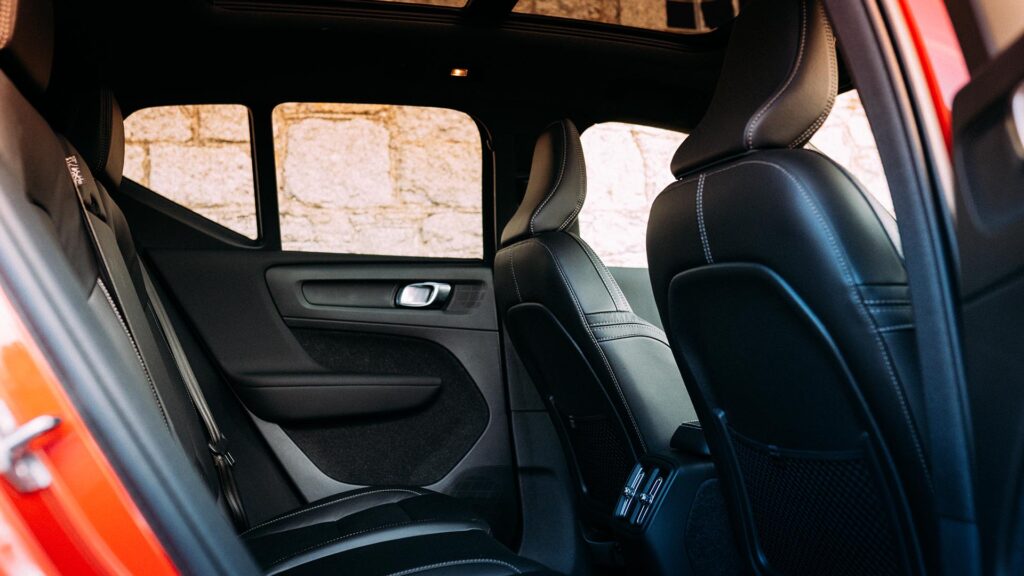
You don’t necessarily want to drive this car incredibly quickly because it’s tall and it’s heavy, so if you do go around a corner relatively quickly then there’s quite a lot of body lean. It doesn’t feel completely out of control but still you get the feeling that this car’s made more for gentle driving around town or longer distance motorway cruising because it does have a good ride, it’s very impressive in that respect.
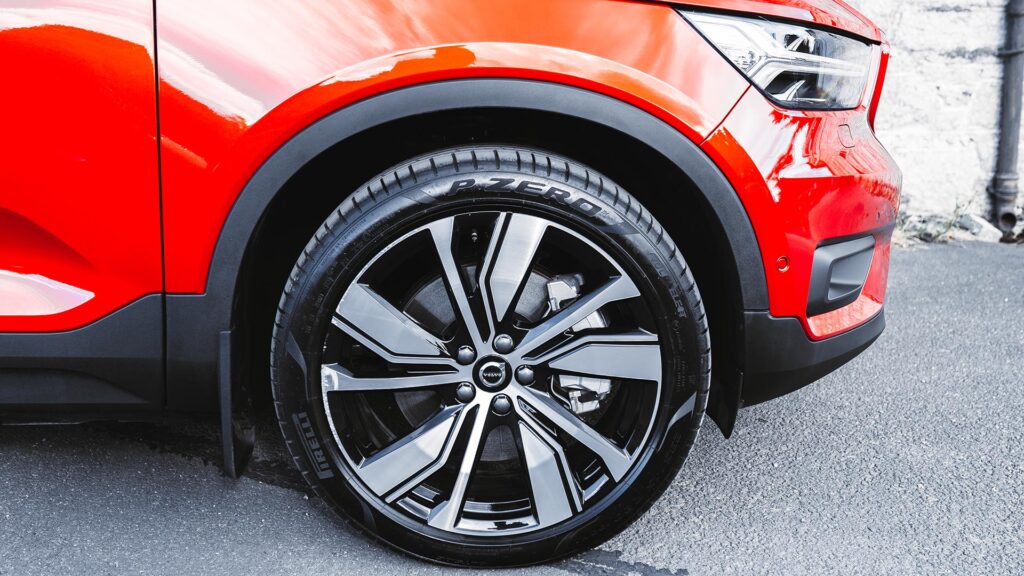
The only problem being that potholes and broken roads do intrude on the suspension with some hard uncomfortable thuds as you pass over things that an Audi e-Tron would glide over. It’s not enough to detract too much though from what is a quiet and quick EV, there are a few different settings that you have for the car as well. To get to them you click on the settings button and you’re presented with a pretty overwhelming manual, instead of some nice friendly icons with very small text which can be difficult to read. If you’re not familiar with the system, this can make it a little overwhelming and not especially easy to use on the move.
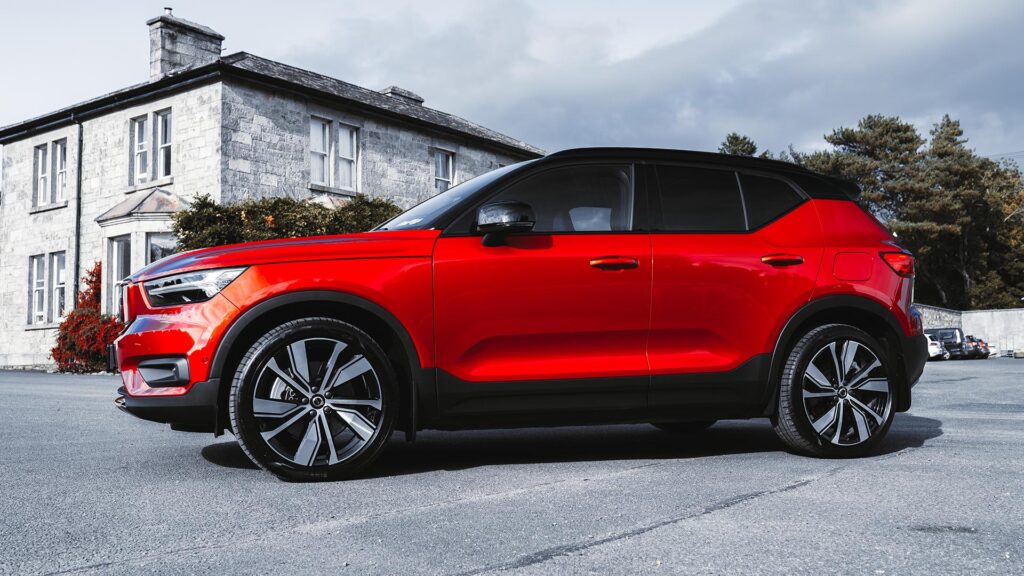
Using regenerative braking, you lift off the accelerator and the car will slow itself down and it will eventually bring it to a complete stop. This is great around town because it means you just hardly ever have to touch the brake pedal but the thing is now in the electric car world if you really want to grab headlines and grab the attention of the mainstream then you’ve got to have a product that’s either really cheap or has the ability to travel really far on a single charge.
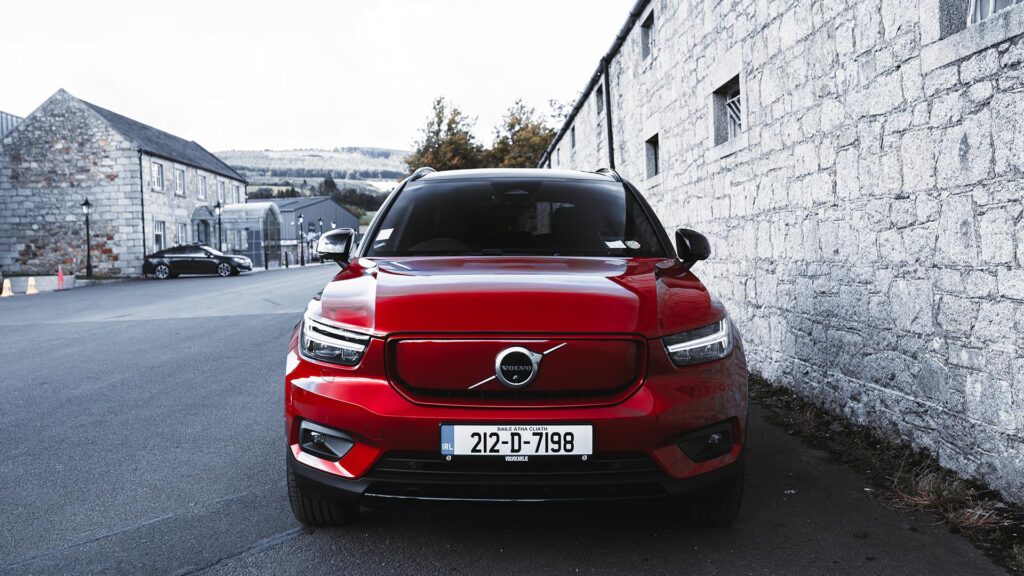
Starting from around €53,750 which definitely isn’t cheap no matter what kind of realm your bank balance operates in, the WLTP range of this car is rated up to 417 kilometers which is good and it’s among the better ranges available of new EV’s but it’s not really an average petrol tank range yet. Remember we’re seeing cars like the VW ID3 and Tesla Model 3 that come with ranges over 600 kilometres so that is seriously impressive. In this XC40 because it doesn’t offer that, it means it doesn’t have that instant kind of class changing revolutionary impact. It’s still a very good electric car, it feels plush throughout and the acceleration really is very impressive, it’s not a complete game changer but that doesn’t stop it from being a very good electric car.

This P8 Recharge version is more expensive than a Tesla Model 3 performance and not far off twice the cost of a Kia e-Nero which admittedly isn’t as nice inside but will go further on a full charge.
